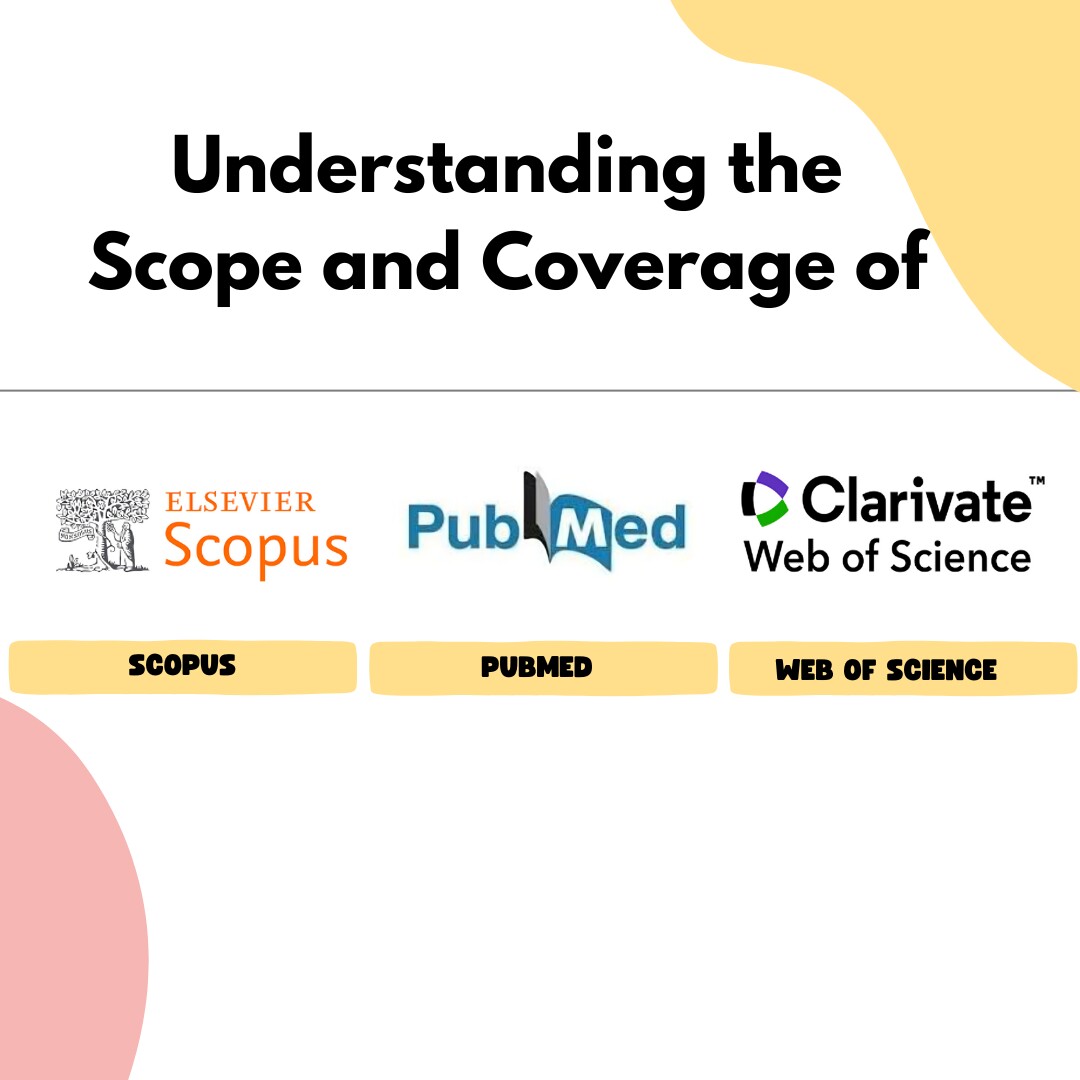Understanding the Scope and Coverage of Scopus, Web of Science, and PubMed


When it comes to academic literature databases, Scopus, Web of Science, and PubMed each have their unique strengths and focus areas. To better understand the scope and coverage of these platforms, let's conduct a comparative analysis of the types of content they index.
Content Type | Scopus | Web of Science | PubMed |
|---|---|---|---|
Journals | Over 23,000 peer-reviewed journals from 5,000 publishers worldwide | Covers over 21,000 journals, with a strong emphasis on high-impact, citation-indexed publications | Primarily indexes biomedical and life sciences journals, with a collection of over 33,000 titles |
Conferences | Includes proceedings from over 225,000 conferences and events | Indexes select high-quality conference proceedings, particularly in science and technology fields | Limited coverage of conference publications, with a focus on biomedical and life sciences events |
Preprints | Integrates content from popular preprint servers like arXiv, bioRxiv, and medRxiv | Does not currently index preprint servers, although this may change in the future | Indexes preprints from biomedical and life sciences repositories like bioRxiv and medRxiv |
As this table highlights, each database has a distinct focus when it comes to the types of content it covers. Scopus and Web of Science tend to have a broader scope, indexing a wide range of peer-reviewed journals and select conference proceedings, while PubMed is more specialized in the biomedical and life sciences fields.
In addition to the types of content, the disciplinary focus and regional representation of the publications indexed in these databases are also primary factors to consider.
Covers various disciplines, including science, technology, medicine, social sciences, and humanities.
Primarily focused on science, technology, and medicine, with some coverage of social sciences and arts and humanities.
Exclusively covers biomedical and life sciences literature, with a strong emphasis on clinical medicine, biology, and related fields.

Indexed publications from over 5,000 publishers worldwide, with a relatively balanced representation of content from North America, Europe, and Asia.
Historically, it had a stronger focus on North American and Western European publications but has expanded its global coverage in recent years.
Predominantly indexes English-language journals, with a significant representation of publications from the United States and other English-speaking countries.

Scopus offers a range of comprehensive citation-based metrics, including CiteScore, SNIP, and SJR, which evaluate the impact of publications, authors, institutions, and journals. These metrics provide nuanced assessments by considering factors like citation potential and journal prestige. Scopus also provides detailed citation reports and analysis tools to enable in-depth evaluation of citation patterns and research trends.
Web of Science is renowned for the Journal Impact Factor (JIF), a widely recognized metric for assessing a journal's citation impact. The Web of Science Core Collection also enables robust citation analysis through metrics like the h-index, citation reports, and citation mapping tools, which track research influence and visualize citation networks.
While PubMed does not directly offer citation-based metrics or advanced analysis capabilities, it is integrated with the Web of Science Core Collection, allowing users to leverage Web of Science's citation analysis features for PubMed-indexed publications.
Are you unsure about which journal would be the best fit for your upcoming publication?
We can help you navigate the complex landscape of academic journals and identify the most reputable options aligned with your research scope. And we'll guide you through every step of the publication journey.
Our team of expert researchers has deep knowledge of the leading journal databases, including Scopus, PubMed, and Web of Science. We can provide you with a curated list of journals, complete with detailed information to assist you in making an informed decision:
Journal website links
Scope and focus areas
Article Processing Charges (APC)
Indexing details (Scopus, MEDLINE, Web of Science, etc.)
Impact metrics such as CiteScore, SNIP, SJR, and Journal Impact Factor
Once you've selected the ideal publication venue, we'll take care of the rest. Our experienced editors will format your manuscript to the journal's specifications and handle the submission process on your behalf. We'll track the status of your paper and provide updates every step of the way.
If you have any questions, inquiries, or would like to learn more about our services, please don't hesitate to reach out to us. Our dedicated team is ready to assist you.